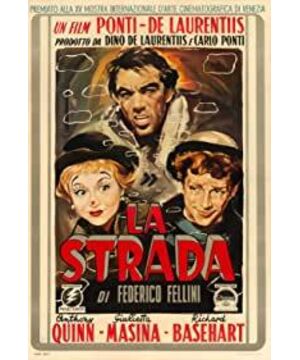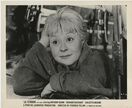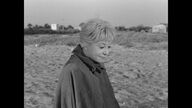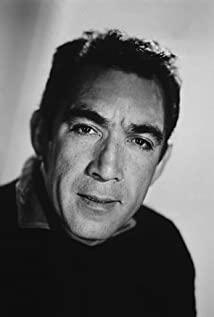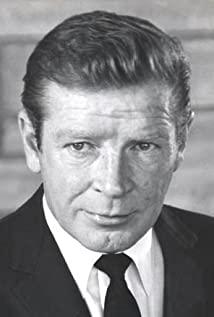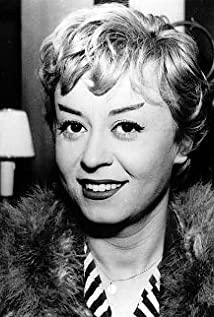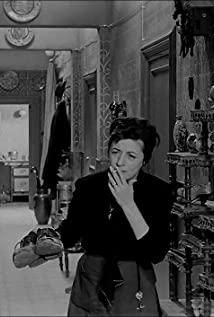On September 6, 1954, the film "The Road" directed by Federico Fellini was screened at the Venice Film Festival in Italy and won the 19th Silver Lion Award for Best Picture. A year ago, it was also here that Fellini won the first Silver Lion Award trophy in his director’s career with "Lang Danger". This time, "Broad Road" blossomed at the Silver Lion Award for the second time, bringing him into the world again. In the field of vision, there was also a higher wave.
Looking back at Fellini’s creative career, we can regard "The Road" as Fellini’s midfield battle. It is not only Fellini’s initial work in turning to a spiritual trek, but also coincides with the transitional moment of film history and history. It is still a fool. "Tradition has once again returned and revived.
A moment of transformation of history and film history: from poor streets to spiritual world
If you look back to the meaning behind the Silver Lion Award for "Broad Road", perhaps it can be understood and considered from the two dimensions of history and film history. Coincidentally, both history and film history were going through a moment of transformation .
Looking at the historical axis, Europe at that time was facing a transitional moment : it began to break away from the ruins of the Second World War, break away from the poor streets, and start the reconstruction of a new life after the war. In the early 1950s, with As life is on the right track and gradually become stable and prosperous, people turn to project more attention to the reconstruction of their inner world and spiritual life.
In the Italian film history coordinate system, it is also facing a transitional moment : the Italian neo-realism school and film movement that emerged from the rubble after the war, it once led this country to pursue the dream of rebuilding its homeland, and is the pioneer and pioneer of new urban life. The weather vane, at this time, this popular myth established with documentary aesthetics has gradually come to an end. New realism has completed its mission of the times, and its aesthetic features have become a legacy and inherited. It is also at this moment that Fellini took his films from the aesthetic cornerstone of the new reality and began to turn to spirituality. Navigating the world, exploring the complex and subtle palaces of human nature and spirituality, and questioning the mystery of the human mind, "The Road" is the iconic work of this transitional moment.
The whole film of "Broad Road" reveals the entanglement and blending of two forces: there are figures from the neo-realistic aesthetics of predecessors, but also the unique personal style of Fellini's authorship (or Fellini). The budding of brushstrokes.
The foundation of "Big Road" is undoubtedly realism, and the road itself is a very realistic and metaphysical image. At the same time, real street scene shooting, simple camera movement, and anti-dramatic plot development all create a strong sense of reality and documentary style. In the changing of time and space scenes, what remains unchanged is the background color of the Italian folk customs. These are the nutrients that Fellini inherited from the neorealist masters. On the other hand, in every period of time and space, Fellini deliberately blurs the reality, blurring every specific and subtle coordinate in the realistic geographical sense of Italy.
There is such a plot in the film:
After a performance, Zambano took Gesomina to the restaurant for dinner. Zambano asked Zambano: "Where is your hometown?" Zambano: "My hometown." Jesomina asked again. : "Where were you born?" Zambano replied, "At my father's house."
This is another philosophical dialogue. It can be said that in the metaphysical narrative texture, Fellini deliberately weaves a metaphysical theme. There are many dialogues about the location in the whole film, but only one specific name-Rome has appeared, which instead condenses Rome into a symbolic symbol, which has become a spiritual symbol in Fellini’s heart. It also became the geographic totem conveyed by Fellini through the film.
Duo of Two Video Texts: Road and Love
"Big Road" is first of all a road-themed film, which tells a journey about wandering and wandering. In 108 minutes, I followed the protagonists Zambano and Jesomina on a wandering forever on the road. On the way, I also encountered a third protagonist, Irmato, a quack artist nicknamed "The Fool". The three people encountered different fates on their respective roads: The metaphysical Zambano is of course a believer of pragmatism and realism. Acting, earning money, sexual intercourse, and brutal violence output constitute almost all of his life, but he In the end, Gou survived; the metaphysical Jesomina is the opposite of idealism and romanticism, but her road failed to support her, and finally died alone and desolately. "The Fool" Irmato is a more special image. In the film, he is close to the existence of surreal symbols, and his road is dissolved in Zambano and Jesomina.
Fellini's two main roads, ideal and reality, set in the two protagonists, echo the theme of the British writer Maugham's novel "The Moon and Sixpence". Of course , the motifs and encounters behind this set of opposing roads are also to every audience The puzzles and problems thrown up to this day are still asking you and me vigorously, and asking everyone who watches the film.
"Big Road" began to drift, and finally drifted. The three protagonists are drifting, the circus is drifting, and the nuns are drifting. Through the above characters, Fellini conveys such a message and feeling: life is forever Wandering and wandering on the road. This feeling can also resonate strongly at the moment. It has a certain spiritual fit with the now anxious siege effect. The latter believes that the essence of life is nothing more than the transition from one cage to another. That's it.
Secondly, "Big Road" is still a story about love . The charm of this love story lies in the fact that a unique sample full of personality, under the lens of Fellini, has a universal and widespread appeal. The Iron-Lung Hercules Zambano is savage, rude, violent, full of primitive animality and desire; Jesomiena is gentle, innocent, kind, and even holy, which is filled with poetry and divinity. .
And these two poles can also be regarded as the two poles in human beings or human nature. Fellini deconstructs them in the film, and arranges them to Zambano and Gesomina ingeniously and reasonably. At the same time, in this love story, Fellini also embedded a core of modernity- loneliness . Two lonely souls, two lonely islands, met on the barren and desolate land of Italy, and they started their wandering journey.
The character image of Zambano reminds me of Sisyphus in Greek mythology. The boring man repeats the same lines and content again and again every year. In order to show the boringness of Zambano, Fellini arranged for him to speak completely before each performance, but the retelling was slightly different each time to show the sense of reality.
Jesomina is the character that impressed me the most in the film. It is largely due to the precision of the director's casting-Julieta Massina, she is the embodiment of Fellini's spiritual muse, and also his wife. Juliet's successful interpretation of Jessomena lies not only in her superb performance, but also in her own temperament that fits the character very closely. I think audiences who have watched "Broad Road" should be moved by the Tower of Juliet. The face of this muse is like a mountain, containing infinite information, her face is pure and flawless, and the stars are shining in her eyes.
Jesomina is kind, fragile, with a soft heart, extremely sensual and empathetic. She never cried for her destiny, but she burst into tears for every occasional encounter. She always tried to grasp the weak love firmly. Yuguang was cut off by Zambanu again and again. From the beginning to the end of the film, Zhengzheng Tiehan Zangba Nuo cried only once on the beach at the end, and it was sobbing. The night was shrouded by the sea, and there were waves. At this moment, he removed all the hard armor, the fragility and softness in his heart, and the most human aspect was exposed in front of every audience. Zambano finally realized that he was actually himself The one I love deeply is Jessomina, and the lover has passed away, and nothing can be restored. The road is vast, and no one is with him, the fate of loneliness will eventually fall on everyone.
Some critics have compared the model of this love story with "Beauty and the Beast", which is obviously arrogant. The latter is a typical Hollywood product, with significant typological characteristics and the imprint of the times. If I have to find a reference, I would rather compare "Big Road" with the movie "Mo Di" directed by Eslin Walsh in 2016. The two films have some in terms of the atmosphere of the love story and the setting of the characters. Similar temperament. However, "Mo Di" is based on real people and real events, and is more realistic. It is a completely realistic video poem.
The Return of Three Literary Traditions: The Visualization of the Image of "Fools"
The three most important roles in the film are: Zambano, Jesomina, and the quack artist Irmato who is nicknamed "The Fool". In addition to Zambano, the other two characters, Jesomena and Irmato, are all flowing with the blood of "Fools" and shining with the light of "Fools' Literature". They are a criticism of the ancient Western "Fools' Literature". Inheritance and return, a visual transformation and presentation.
In the Western cultural criticism tradition, the original allusion of the word "wisemen of Gotham" has the demeanor of "rationality" or "wise men", which is a kind of great wisdom and stupidity. "Fools" are "rationality" and "ignorance" from the beginning. The unity of opposites between "wise men" and "fools". In the "Bible", there are many images of "stupid people". They always exist as the opposite of "wise men" or co-existing with "wise men".
Broadly speaking, the traditions of "Fool Literature" and the image of "Fools" have been passed down and changed for a long time. The "Crazy" culture in Medieval Europe (French philosopher Michel Foucault also studied the monograph "Madness and Civilization), silly farce on the stage, Shakespeare’s plays, German writer Brandt’s "The Ship of Fools", American writer Katherine Ann Porter’s "The Ship of Fools", Dutch writer Erasmus "Ode to a Fool", etc., can be regarded as a branch grown in its literary soil.
The Great Road, which was born in Europe in the middle of the 20th century, can of course also be regarded as an image of the "Fool" image. The image settings and character plots of the two "fools" in the film are similar but have different functions and meanings.
The nickname of quack artist Irmato is "fool". In fact, his name means fool and fool in Italian. Irmato took the meaning of "fool" from the name, but in specific behavior, he was a very smart person, even a little transcendent, seeing through the world, close to the breath of a wise man. This is his first functional attribute; the second functional attribute can be understood as salvation. From this level, Mato exists as a symbol of angels. For example, in the first shot of his appearance, the director gave a long-range shot. Mato wore a pair of angel wings, the spotlight hit him, and he stepped on the steel wire to look down at the people. There were teardrops on his eyes, suggesting his unfortunate fate. From heaven to earth, he will pave a path of redemption to the sinful fallen Zambano; he leads the innocent troubadour Jesomina to find the support of value, and brings comfort to the latter's heart.
Jesomina has some low-mind and mentally handicapped people, but the mentally handicapped here refers to a certain kind of weakness, a certain kind of innocence, and holiness. She should be placed in the framework of the inheritance of the "Fool" literary tradition to understand, then her role has a divine brilliance. As a result, the third ensemble of the film- Redemption . If Zangbano symbolizes the beasts and fallen humans in human nature, and the whole body is still primitive and barbaric, then "the fools" Irmato and Gesomina came to the world with the mission of redemption. Redeem Zambano, redeem fallen mankind, guide mankind in the direction of faith, and find support for value.
Through "The Road", I saw the long tradition of Fool's Literature reborn in Italy in the 20th century. More precisely, it was brought to life in Fellini's images.
When "Broad Road" was released, Fellini was 34 years old. What he could not imagine was that in 2018, after a first year, the 37-year-old Italian female director Alice Lolvacher would take over the image of "Fool" and be high. Hold this torch and ignite this ancient and long-standing tradition again. On May 13, 2018, the film "Happy Lazzaro" directed by Alice Lolvacher premiered at the Cannes Film Festival in France. It was nominated for the Palme d'Or in the main competition and won the best screenplay award.
"The Fool" Jesomina once shining the Adriatic Pearl, this time, "The Fool" Lazaro illuminates the sky of France. Of course, compared to the ambiguity and obscurity of the predecessor master's "Fool" image, Lazaro's "Fool" image is clearer and more direct. He is the modern Jesus.
Both "Broad Road" and "Happy Lazaro" had a somewhat similar fate at their respective film festivals: they both passed by with the highest awards. But I think that time will prove everything, and the light of "The Fool" Jesomena and Lazaro will surely shine more and more in the long river of film history.
View more about La Strada reviews


